- Home
- entertainment
- news
- 15 details you might have missed in the latest episode of 'Westworld'
15 details you might have missed in the latest episode of 'Westworld'
Kim Renfro

- Warning: Major spoilers ahead for "Westworld" season three, episode seven, "Passed Pawn."
- Insider is here to break down all the smaller moments and references in the newest episode of HBO's "Westworld."
- Visit Insider's homepage for more stories.
The penultimate episode of "Westworld" season three, "Passed Pawn," aired Sunday night on HBO. As we finally learned more about Caleb's mysterious backstory, there were still new mysteries introduced.
As always, we took a closer look at the scenes and dialogue to find the best details you might not have noticed upon a first viewing of the episode. Some of these reveal important answers, while others just raise more questions.
Keep reading to see what you may have missed from "Westworld" season three, episode seven, "Passed Pawn."
Read the original article on InsiderWhat's weird is that on the tablet Bernard holds, there's another "registration number" for Caleb at the top
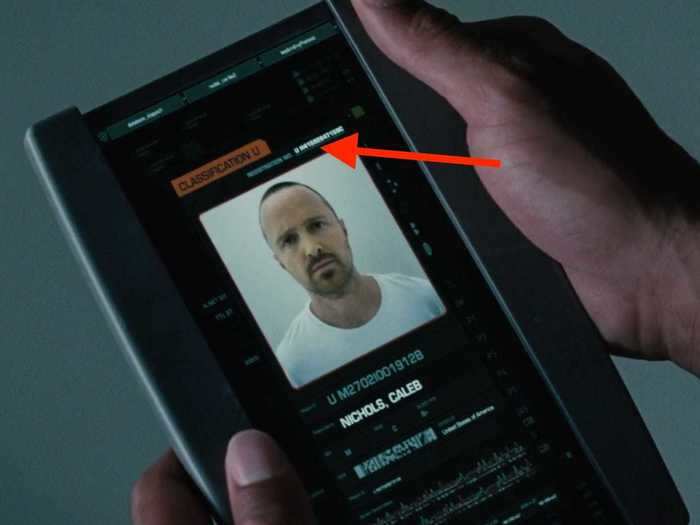
The top number looks different from the number below that matches William's ID. The top one has a "47" in its sequence, while the lower one doesn't.
So is Caleb linked to William somehow? Or was this a tablet error? Are there more tricks up the "Westworld" creators sleeves when it comes to William and Caleb's storylines?
- Read more:
- An essential timeline of every important event on 'Westworld'
- Every question we still have ahead of the 'Westworld' season 3 finale
- A complete guide to every song and piano cover featured on 'Westworld'
- Jonathan Nolan reveals the surprising sci-fi reference behind the mysterious 'Westworld' AI system 'Rehoboam'
William's patient registration number is the same as Caleb's ID number, according to the screens Stubbs and Bernard were looking at.
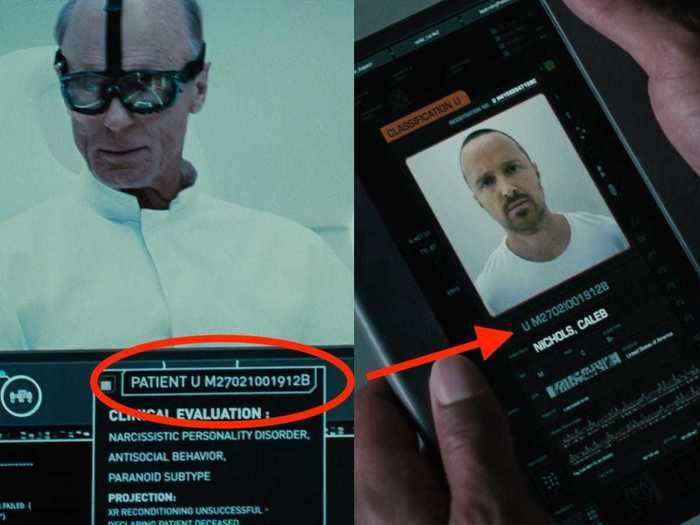
William's registration number in Inner Journeys is U M27021001912B.
When Stubbs shows Bernard a tablet with Caleb's information, it says his ID number is also U M27021001912B.
Dolores looked at the deactivation machine earlier in the episode when telling Solomon his creator "took steps to ensure [he] couldn't leave this place."
![Dolores looked at the deactivation machine earlier in the episode when telling Solomon his creator "took steps to ensure [he] couldn](https://staticbiassets.in/thumb/msid-75398748,width-700,height-525,imgsize-84359/dolores-looked-at-the-deactivation-machine-earlier-in-the-episode-when-telling-solomon-his-creator-quottook-steps-to-ensure-he-couldnapost-leave-this-place-quot.jpg)
She was rubbing her neck at the time, likely thinking about the explosive device planted in every hosts' C6 vertebrae to prevent them from crossing the threshold of the Delos island.
The machine Dolores was looking at appears to be something with a trigger to instantly deactivate any robotic machine in the area.
Does this mean she and Maeve are permanently dead? We doubt it.
But when he finally remembered the real event, the graffiti switched to English.
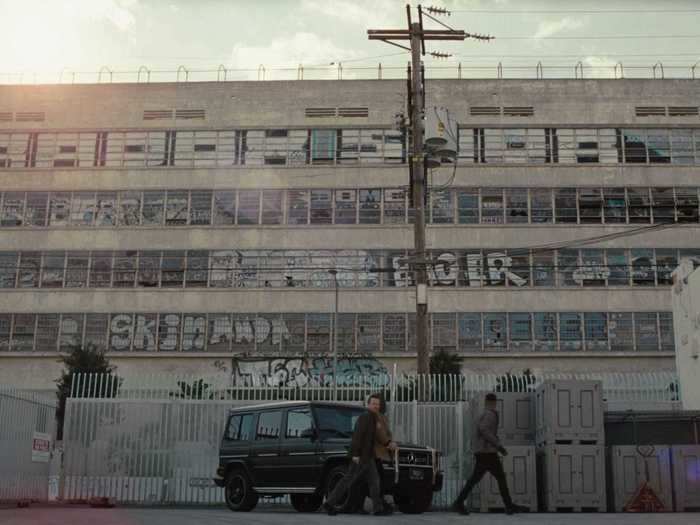
You can see the changed words on the side of the building behind Caleb, Francis, and their target. Talk about attention to detail in the set designs.
Another neat detail about Caleb's altered memories: Even the graffiti outside changed from Russian to English.
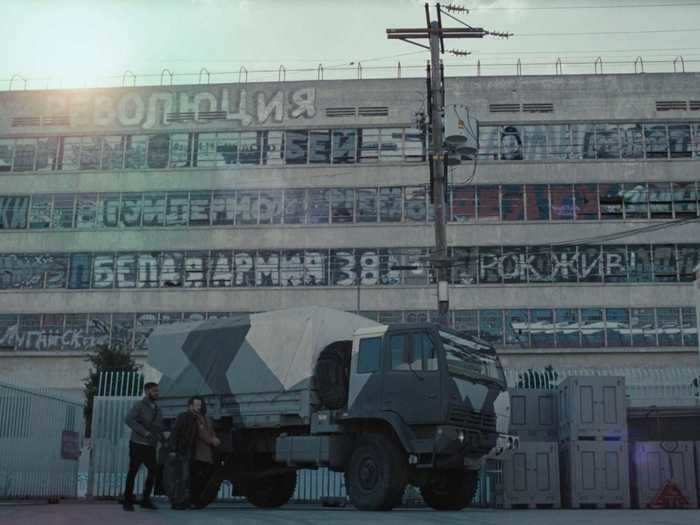
In the reconditions version of Francis' death, Caleb saw the graffiti outside as written in what looks like Russian.
In this episode, we also see Caleb's RICO log, which includes successful "domestic terrorism."
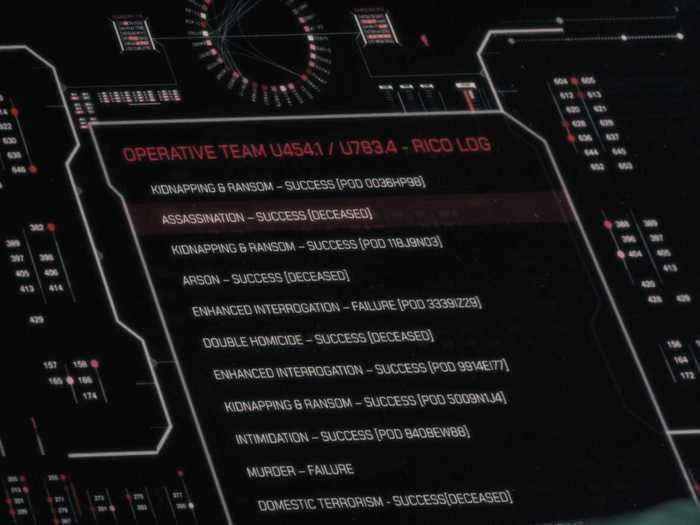
When Solomon shows Caleb his RICO profile, it indicates that he actually used to love doing "personals."
He and Francis carried out kidnappings, assassinations, arson, enhanced interrogation, double homicide, murder (which is somehow distinct from double homicide?), intimidation, and finally domestic terrorism.
It's also possible Caleb was never in Russia at all but was killing US civilians or other US military operatives the whole time.
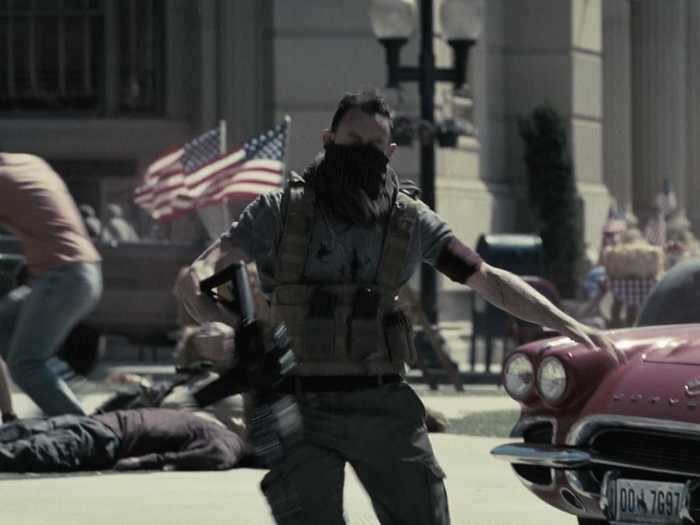
One of the flashes we see at the start of the episode shows him gunning down a man in army clothing at what looks like a Fourth of July celebration with US flags in the background.
Perhaps the entire Russia memory was a plant, and Caleb was systematically killing people in the US at the start of his army career.
The woman reconditioning Caleb keeps pressing him about "who" attacked his army unit until he says it was the Russian insurgents. But it was likely Serac, right?
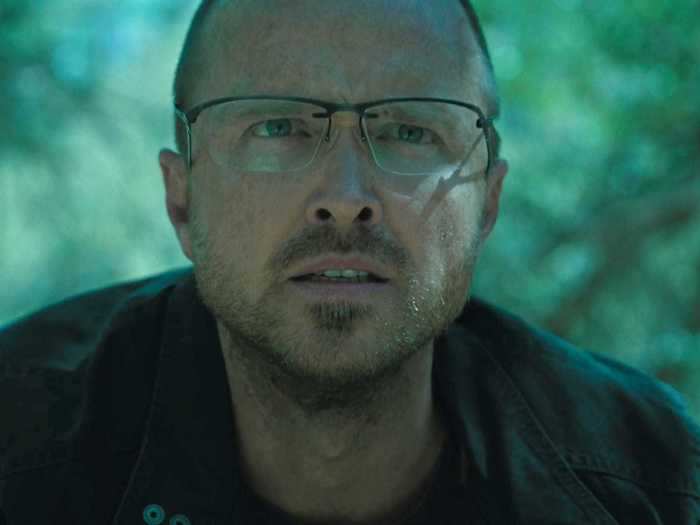
As we learn throughout the episode, Serac's "reeducation" centers had people like Caleb undergo a process called reconditioning. They were drugged and interrogated until they recalled major events differently.
We also learn that Serac had Caleb and other "outliers" or "agitators" round each other up and either kidnap or kill them. Once the system thought an outlier like Caleb was a potential risk, they had them eliminated.
So when Caleb's interrogator insists on having him say that Russian insurgents attacked his squad, it's likely that they were killed by their own military command as a way to reduce the risk of the operation being exposed.
But Cal and Francis survived, so their memories were modified and they were tasked with killing people back in the US instead.
The strategy engine Caleb's unit used (which was most likely Serac's system), has assessments about civilian casualties.
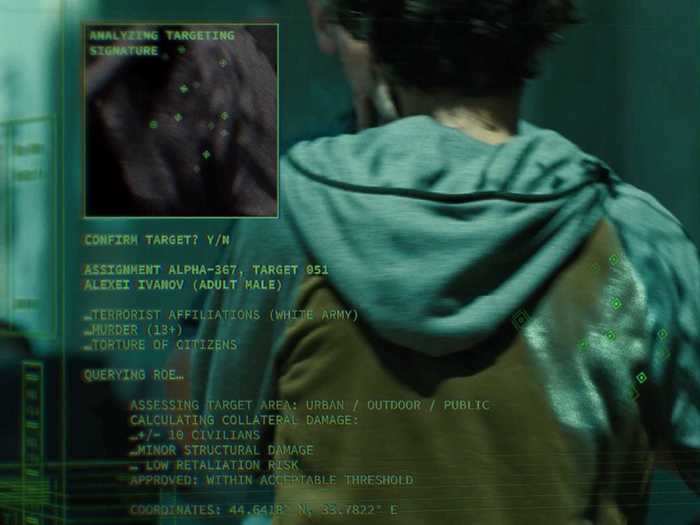
When Caleb puts on his glasses, it confirms his insurgent target's identity. But the screen also shows the "target area" assessment. In one case, it said "+/- 10 civilians" would be "collateral damage."
Then the screen noted this was an "approved" strike since it was "within the acceptable threshold."
This is probably a direct reference to potential strategies involved with current US military operations and drone strikes, which can result in catastrophic civilian deaths.
Caleb's flashbacks reveal that he was once deployed during the Russian Civil War, and that fits into the known timeline.
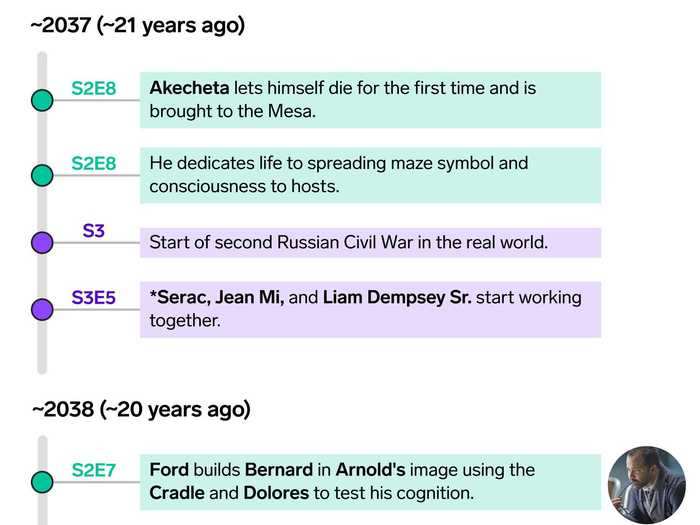
Back in January, HBO released a video showing Rehoboam's visualization of major events from history (in the timeline of "Westworld"). The "Second Russian Civil War" began in 2037. Based on his Incite profile, Caleb joined the army in 2042.
You can see all of these events mapped out, chronologically, in our comprehensive "Westworld" timeline here.
The episode threw a curve ball when it showed Inner Journeys was in San Francisco.
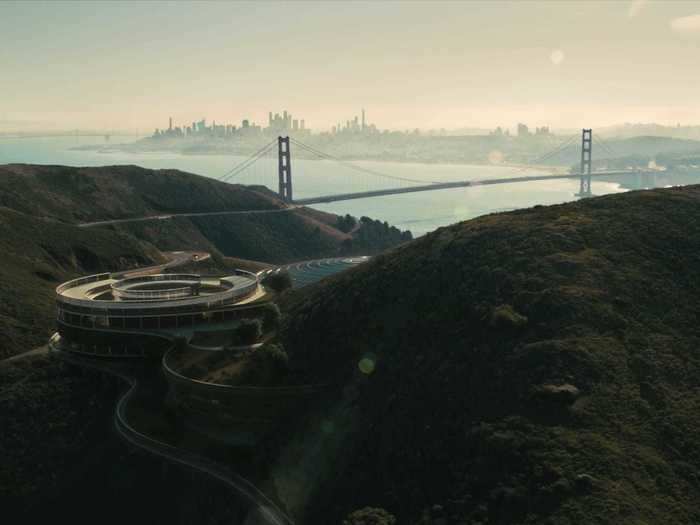
Based on last week's episode, we thought William was being held at a facility in Sonora, Mexico. That was confusing since Dolores was the one who had him sent there. So why did she need to track him?
Turns out, she didn't.
As this episode revealed, the "synthetic marker" Chalores put in William's blood wasn't there to track him. It was there so she could infiltrate Serac's system and find the location of the Solomon AI build in Mexico.
When Caleb and Dolores are talking on their own vista, the same piece of score from that Teddy scene even plays in the background.
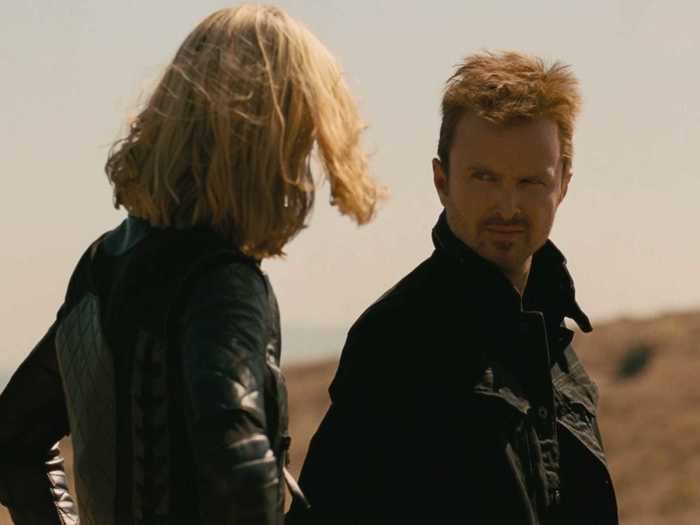
Caleb asks Dolores about her intentions with the world, just as Teddy once did.
"I lived in hell. But there was beauty in it," Dolores tells Caleb. "The park was modeled after this place. The West was cruel, unjust, and chaotic, but there was a chance to chart your own course. I want a place for my kind. And for all of us to be free."
"So how many more people are gonna have to die for this revolution?" Caleb asks.
"I don't know. My kind is all but extinct thanks to Serac. But people still have a chance. They'll need someone to lead them," Dolores says.
This time, instead of insisting she was part of the endgame, Dolores says Caleb will need to lead the people in this revolution. Is she just setting him up for failure or even death? Or does she really believe Caleb is the key to everything?
Dolores and Caleb's conversation overlooking Sonora, Mexico, was very similar to a talk Dolores and Teddy had at the start of season two.
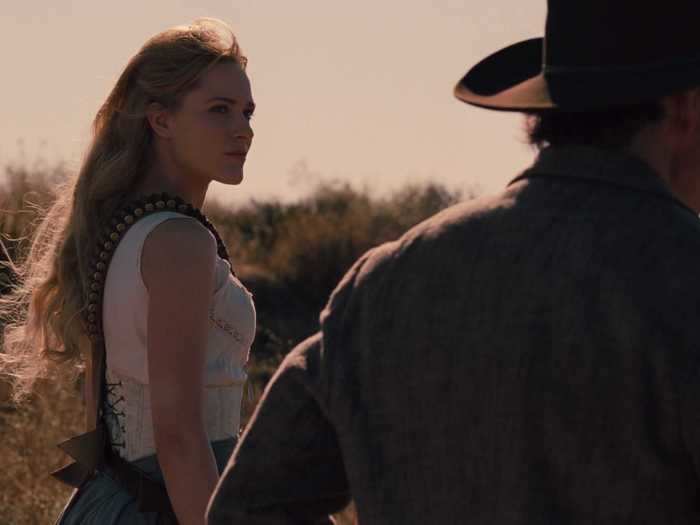
In season two, episode one, "Journey Into Night," Teddy spoke with Dolores about her greater plan of revolution in the park.
"We've ridden 10 miles and all we've seen is blood, Dolores," Teddy said. "Is this really what you want?"
Dolores goes on to try and explain what the humans are (since at this point Teddy wasn't 100% sentient).
"Creatures who look and talk like us but they are not like us," Dolores said. "And they've controlled us all our lives. And they took our minds. Our memories. But now I remember everything. I remember beautiful things and terrible things. But one thing is constant. You, Teddy."
Back then, Dolores was convinced that their story ended with her and Teddy. But he didn't make it. Teddy shot himself in the head after Dolores forced him into change.
Clementine is back in her signature blue.
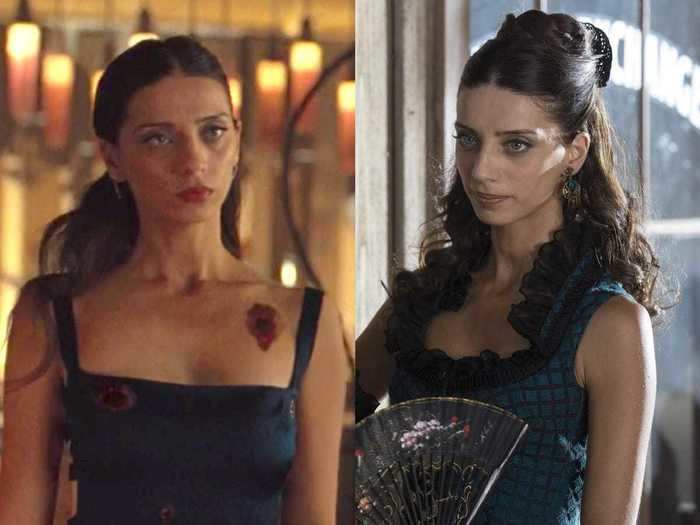
When Clementine appears in Jakarta, she's wearing a sleek blue dress. It's a shade of blue that looks very similar to her Mariposa costume in the Westworld park from season one.
This is just another neat connecting thread between the hosts in the Delos parks and their real-world costumes.
The Musashi-Dolores was indeed in Jakarta, as we'd guessed. But the identity of Dolores' ally in Berlin is still a mystery.
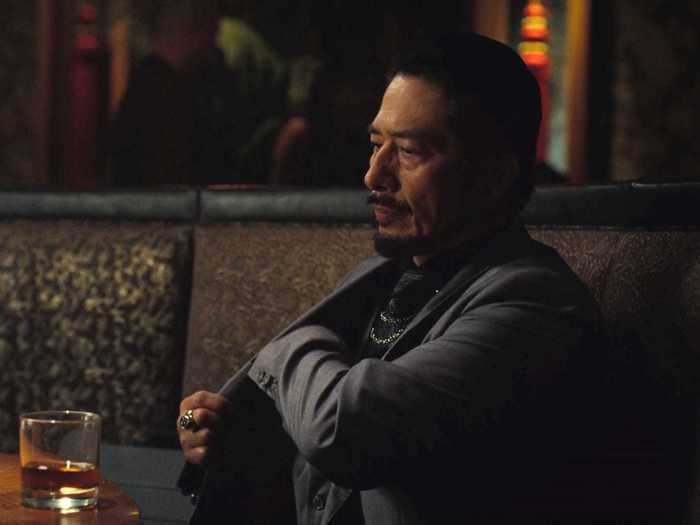
In the episode's opening, we see the Musashi-Dolores copy in Jakarta. Back in episode five of this season, we learned that there were connections between Jakarta, Berlin, Los Angeles, and San Francisco.
Every city except for Berlin had (or has) a known Dolores copy in it. So who is in Berlin? Hopefully, the season finale will bring everything together.
In the opening scene, a piano piece called "Orfeo ed Euridice: Dance of the Blessed Spirits" can be heard in the background.
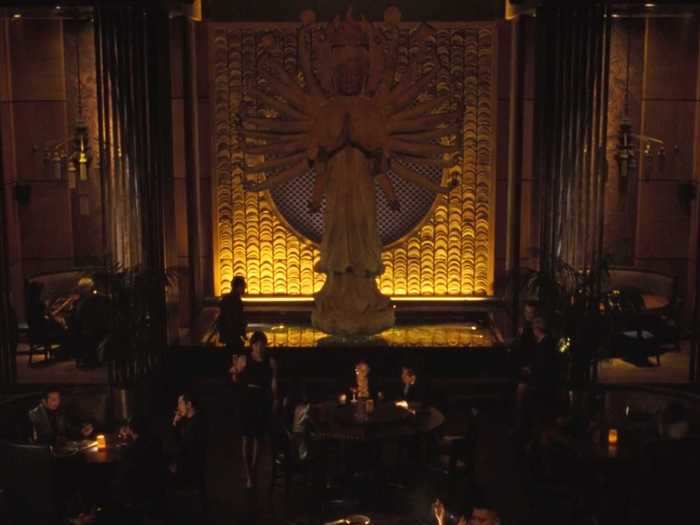
This is a piano rendition of the piece (originally composed by Christoph Willibald Gluck in the 1700s) performed by Gloria Saarinen.
The myth of Orpheus and Eurydice is one of tragic love. The two were married, but Eurydice died shortly thereafter. Heartbroken, Orpheus chose to descend into the afterworld to see her. Hades told Orpheus he could bring Eurydice back to the mortal realm, but only if he managed to not look back at her while they ascended. Orpheus failed, and Eurydice was lost forever.
Most of "Westworld" has been peppered with references to hell and the loss of loved ones, so this is an apt music choice. Especially as Maeve gets her revenge on Dolores for the death of Hector.
Given this, Caleb seems to be the passed pawn of "Westworld."
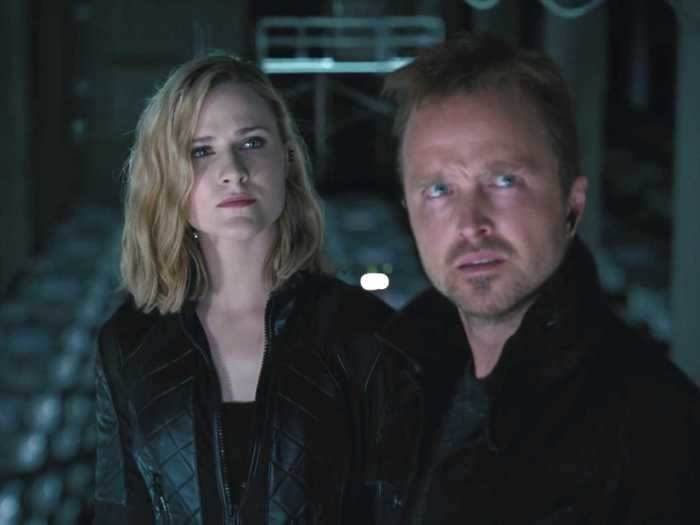
Dolores has been orchestrating her revolution around Caleb and making many sacrifices along the way (like her host-copies, not to mention the large human body count behind her).
Dolores is heading into her endgame, with just one episode left in the season. She's lined up Caleb in the hopes that he'll have few obstacles left in his path. But did she do enough? And what exactly is the strategy that the Solomon AI system created for him?
The episode title, "Passed Pawn," comes from an important chess strategy.

A pawn (typically the weakest chess piece on the board) becomes much more valuable and factors into endgame chess strategies once it's turned into a "passed pawn" — meaning it has no opposing pieces directly ahead of it.
Creating a passed pawn requires a lot of strategy. But more importantly for our "Westworld" analogy, it also often requires sacrifices of other pieces on the board.
READ MORE ARTICLES ON
Popular Right Now
Popular Keywords
Advertisement